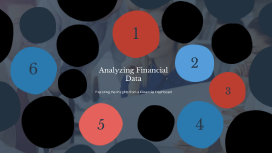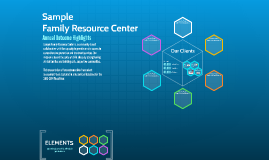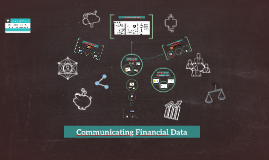Analyzing Financial Data
Transcript: Analyzing Financial Data: The Road to Insight Recap of Key Findings Summarizing the key findings and actionable steps for financial improvement from the analysis of the financial dashboard. Navigating the Dashboard Interface Reviewing the essential insights obtained from financial data analysis, such as revenue trends, expense patterns, and overall performance metrics. Components of the Financial Dashboard Users can navigate the dashboard interface by selecting different time periods, filtering data by specific criteria, adjusting visual representations, and drilling down for more detailed information. The interface is designed for intuitive use, enabling users to quickly access the desired insights. Understanding Financial Dashboards The financial dashboard typically includes components such as revenue breakdown, expense categories, profit margins, cash flow analysis, and key performance indicators (KPIs). Each component offers a unique perspective on the financial health of the business. Actionable Steps for Financial Improvement Understanding the Financial Dashboard Insightful Data Visualization Identifying strategic actions based on the analysis to enhance financial performance, optimize costs, and seize growth opportunities. Financial dashboards provide a visual representation of a company's financial performance, displaying key metrics and indicators in a digestible format. Financial dashboards offer a consolidated view of financial data, helping users quickly grasp trends and patterns, facilitating informed decision-making. The financial dashboard provides a comprehensive overview of key financial metrics in a visually engaging format, allowing for quick insights and analysis. Enhancing Performance Analysis Understanding financial dashboards enhances performance analysis by providing real-time insights into revenue, expenses, and profitability trends. Leveraging Data for Strategic Planning Enhancing Strategic Competitiveness Strategic Decision-Making in Action Forecasting and Risk Management Data-driven strategic planning is crucial for long-term success. Harnessing insights from financial data allows businesses to align their goals with actionable strategies for growth and sustainability. By leveraging financial insights for strategic planning, businesses enhance their competitiveness in the market. The ability to adapt quickly to changing landscapes and capitalize on emerging opportunities positions companies for sustained growth and market leadership. Real-world examples of strategic decision-making processes guided by financial insights showcase the impact on business growth and sustainability. By illustrating successful outcomes, organizations can inspire a data-driven approach to strategic planning for long-term success. Utilizing historical financial data for forecasting enables businesses to anticipate trends and mitigate risks effectively. Strategic analysis aids in making informed decisions that safeguard the company's financial stability and growth. 1 Execution and Monitoring Strategies Strategic Resource Allocation Strategic Decision-Making Implementing effective execution and monitoring strategies based on financial insights ensures alignment with strategic goals. Continuous monitoring allows for course corrections and proactive measures to enhance performance and achieve targeted outcomes. Optimal resource allocation based on financial insights is essential for maximizing efficiency and returns. By aligning resources with strategic priorities, organizations can enhance performance and achieve sustainable growth. Strategic planning involves setting goals, determining actions to achieve those goals, and mobilizing resources effectively. Financial insights play a pivotal role in guiding these decisions towards positive outcomes. Performance Evaluation Metrics Strategic Partnership Opportunities Strategic Growth Initiatives Establishing performance evaluation metrics derived from financial data allows businesses to measure progress towards strategic objectives. Continuous monitoring and analysis facilitate timely adjustments for better outcomes. Exploring strategic partnership opportunities based on financial insights fosters collaboration and growth. By analyzing data to identify synergies and mutual benefits, organizations can form strategic alliances that drive innovation and expand market reach. Identifying growth opportunities through financial insights empowers businesses to develop targeted strategies. By leveraging data to understand market dynamics and customer trends, organizations can drive innovation and seize growth prospects. Competitive Analysis and Positioning Conducting competitive analysis using financial data helps businesses identify strengths and weaknesses relative to competitors. This insight enables strategic positioning and informed decision-making to gain a competitive edge in the market. 2 Revenue Trend Analysis Analyzing Revenue Insights Tracking revenue trends

















